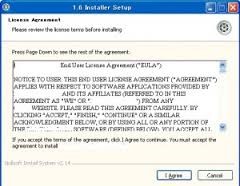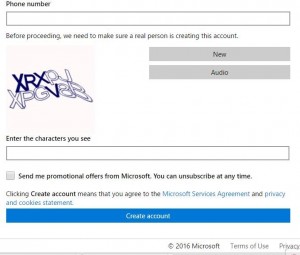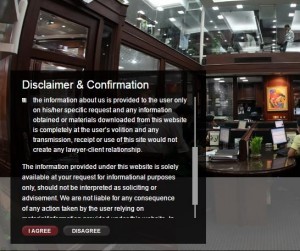
In this blog post, Sakshi Bhatnagar of National Law University Odisha, Cuttack writes about the different agreements that are included in eContracts.
Introduction
The electronic or e-contracts help in making agreements and transactions electronically in the physical absence of the parties. It aims at making lawfully binding contracts at a much faster rate with the use of latest technology. The electronic transactions today are used for a variety of purposes including recognition of digital signatures and electronic records, filing income-tax returns, fillings forms for admissions, paying bills online and others.
Shrink wrap, clickwrap and browsewrap are common types of contracts used in electronic commerce.
What are Shrink Wrap Contract?
Shrink wrap contracts are boilerplate or license agreements or other terms and conditions which are packaged with the products. The usage of the product deems the acceptance of the contract by the consumer. The term ‘Shrink Wrap’ describes the shrink wrap plastic wrapping which coats software boxes or the terms and conditions which come with products on delivery.
PC programming organizations broadly depend on the utilization of “shrinkwrap” permit assertions in the mass business sector circulation of programming. “Shrinkwrap” assertions are unsigned permit understandings which state that acknowledgment on the client of the terms of the assertion is demonstrated by opening the shrinkwrap bundling or other
Bundling of the product, by utilization of the product, or by some other determined instrument.
PC organizations have for the most part chosen to permit duplicates of PC projects to end clients, instead of to offer those duplicates, for the accompanying central reasons: To invalidate the “convention of first deal,” which holds that once a duplicate of a copyrighted work has been sold, the copyright holder’s rights in that specific duplicate are depleted, and the duplicate might be uninhibitedly exchanged, rented, loaned or generally arranged of. To put the client on notification of the terms of the guarantee, if any, made by the seller concerning the product, and to repudiate different guarantees as per the procurements of the Uniform Commercial Code (UCC). To force upon the exchange different terms and conditions through the permit assertion, for example, impediments on the allowable utilization of the product, constraints of obligation, the decision of administering the law, and other authoritative procurements.
Since the permit, understanding bears the essential system by which programming merchants constrain the dangers and obligation emerging from the circulation of their items, the enforceability of shrinkwrap assertions is of awesome noteworthiness. The enforceability of these assertions has for some time been the subject of genuine uncertainty. Before 1996, just three cases had touched on the subject of the enforceability of shrinkwrap permit assertions. One of these cases expected without clarification that the shrinkwrap permit at issue, all things considered, was a contract of grip which could be enforceable just if the procurements of a state statute—which expressly made such permit understandings enforceable—were a substantial statute that was not appropriated by government law.
The other two cases concentrated on the guidelines of agreement arrangement under the UCC and their suggestion for choosing whether a shrinkwrap permit understanding oversees an exchange by any stretch of the imagination—very separated from principles concerning contracts of attachment—and, assuming this is the case, which of the terms contained in that are administering. In both cases, the court held that an authoritative relationship was framed between the product merchant and endless supply of requests for the product issued by means of phone, and the shrinkwrap permit assertion which the buyer saw surprisingly after the agreement had been framed was ineffectual under the UCC to change the terms of the beforehand shaped contract.
What are Click Wrap Contracts?
A clickwrap agreement is mostly found as part of the installation process of software packages. It is also called a “click-through” agreement or click-wrap license. It is a take-it-or-leave-it contract which lacks bargaining power. If a customer likes a product and wants to buy it or avail its service he clicks on ‘I accept’ or ‘Ok’ and if he rejects it, then cannot buy that product or avail that service. Click-wrap agreements can be of the following types: 1. Type and Click where the user must type “I accept” or other specified words in an on-screen box and then click a “Submit” or similar button. This displays acceptance of the terms of the contract. A user cannot proceed to download or view the target information without following these steps. 2. Icon Clicking where the user must click on an “OK” or “I agree” button on a dialog box or pop-up window. A user indicates rejection by clicking “Cancel” or closing the window.
The terms of service or license may not always appear on the same webpage or window, but they must always be accessible before acceptance.

A clickwrap assertions is a kind of agreement that is broadly utilized with programming licenses and online exchanges in which a client must consent to terms and conditions before utilizing the item or administration. 
The arrangement and substance of clickwrap understandings fluctuate by the seller. Be that as it may, the vast majority of clickwrap assertions require the assent of end clients by clicking an “Alright,”I Accept” or “I Agree” secure on a pop window or an exchange box. The client may dismiss the understanding by tapping the Cancel catch or shutting the window. Once dismisses, the client us not able to utilize the administration or item.
The odds are that you consent to clickwrap contracts all the time. These assertions commonly show up in an autonomous page when the client experiences an online enrollment procedure, for example, an email account creation, internet saving money login process, online buy, or another system establishment. Now and again these assertions are absurd, showing many pages of content in a small window that for all intents and purposes no client would take an ideal opportunity to peruse.
The term originates from therapist wrap gets that are likewise basic in the product business. The fundamental thought is that the client is given a notification saying something to the impact of “by opening this bundle, you consent to our terms and conditions…”
Clickwrap assertions allow the online organizations to have contracts set up with various clients without arranging with them exclusively. Moreover, clickwraps grant the organizations to spare electronic marks and fuse extra provisions that are not given by the present digital law.
Browse-Wrap Contracts
Browse-wrap agreements cover the access to or use of materials available on a website or downloadable product. Only if the person agrees to the terms and conditions on the web page, then he can access the contents of the web page. 
In most cases, the website or the browsewrap includes a statement that the user’s continued use of the website or the downloaded software manifests assents to those terms.[1] Many times, the terms mentioned in the browsewraps are explicitly displayed on the website but the existence of such browse wrap is hidden or not seen on the page.
Essentials of an Electronic Contract
- Offer: An offer has to be made to the consumers which are the first and the basic condition for making a contract. Many websites only allow the consumer to browse through its goods and services displayed on its website and allows him to choose from among the available options. This cannot be regarded as an offer as it is merely an invitation to offer to browse through the items and select any of their wishes. Once the person selects and item, then he is the one who is making an offer and according to the availability of the product or convenience, the website either accepts or rejects the offer of selling the particular product or service to the consumer. The consumer’s offer is said to be made when he places the products in the virtual shopping cart or basket of the website.
- Acceptance of the offer: This is the second stage after an offer has been made by the consumer after actually going through the invitation of the offer, i.e., the display goods and services of the website. There are various procedures of accepting offers namely, e-mail, website forms, or online agreements.
- Lawful consideration: For the enforceability of a contract there should be a lawful consideration, i.e., something in return for something. Suppose one offers to do something, then the other would accept it in return for something to make it into a lawfully enforceable contract provided that exchange of things is lawful.
Conclusion:
Contracts, as we all know, are governed by the Indian Contract Act, 1872, but the e-contracts are also governed under the Information Technology Act, 2000. Section 4 of the act talks about the legal recognition of the electronic records as Where any law provides that information or any other matter shall be in writing or in the typewritten or printed form, then, notwithstanding anything contained in such law, such requirement shall be deemed to have been satisfied if such information or matter is— (a) rendered or made available in an electronic form; and (b) accessible so as to be usable for a subsequent reference.[2]
It very well lays down that the electronic records are legally recognized by the IT Act 2000. The earlier Indian Contract Act, 1872 is supplemented in this context with the online transaction as an accepted and legally recognized the form of contract.
LawSikho has created a telegram group for exchanging legal knowledge, referrals and various opportunities. You can click on this link and join:
https://t.me/joinchat/J_
[1]http://law.stanford.edu/wp-content/uploads/sites/default/files/event/266730/media/slspublic/Kim_clicking_and_cringing.pdf
[2] Information Technology Act, 2000 assessed at http://www.dot.gov.in/sites/default/files/itbill2000_0.pdf
 Serato DJ Crack 2025Serato DJ PRO Crack
Serato DJ Crack 2025Serato DJ PRO Crack









 Allow notifications
Allow notifications



Which three cases talk about shrink-wrap agreements? Could you please mention them?